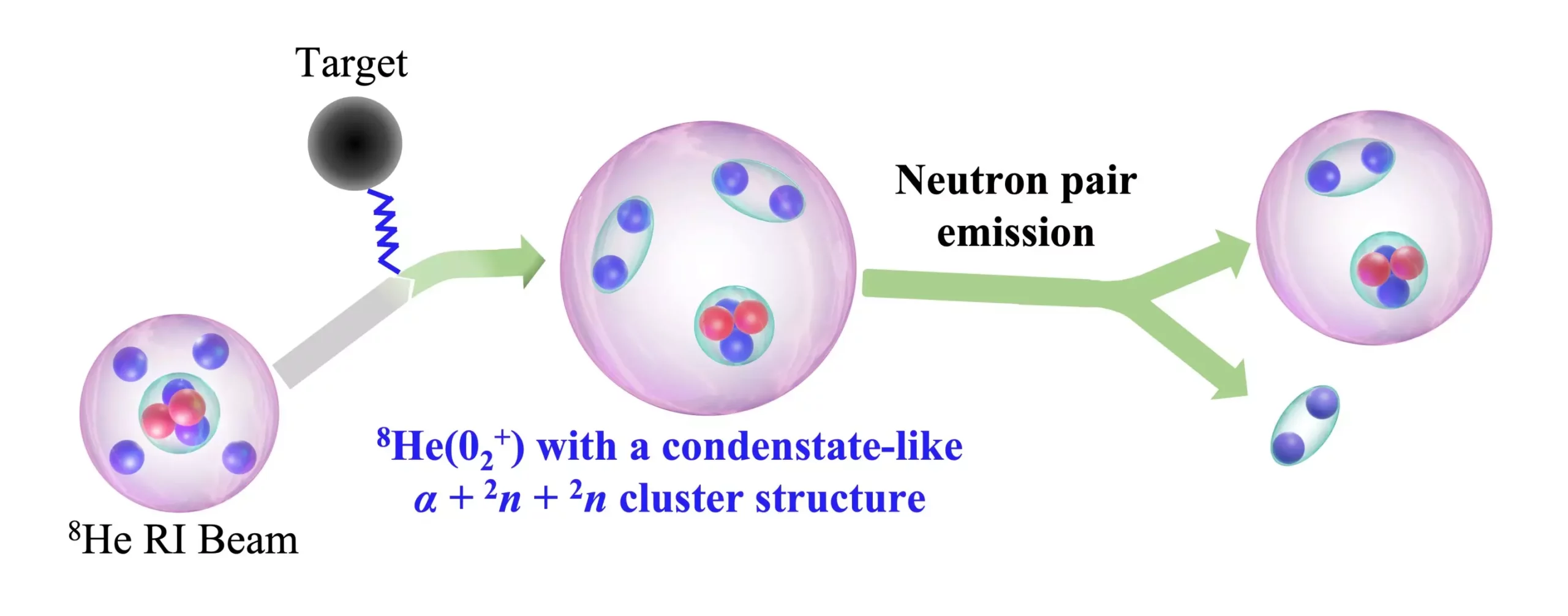Researchers at Peking University in China have made a groundbreaking discovery in the field of nuclear physics, shedding light on exotic nuclear structures and their implications for understanding neutron stars. Through an extensive nuclear scattering experiment, the team successfully observed the 02+ state of 8He, revealing a unique cluster structure with two strongly correlated neutron pairs. This finding challenges the conventional nuclear model and opens up new avenues for scientific exploration.
The conventional nuclear model posits a single-particle picture where nucleons, including protons and neutrons, move independently within a nucleus, forming a well-defined shell structure. This model, based on quantum mechanics, explains nuclear structure and stability by filling distinct energy levels or shells. However, it encounters limitations when addressing exotic nuclei that are neutron-rich and unstable.
What Drives Nuclear Structure?
As a nuclear physicist, understanding the structure of the nucleus and its emergence from complex nuclear interactions is a primary goal. Of particular interest is the condensate-like cluster structure in the neutron-rich nucleus 8He. While a theoretical prediction, its experimental observation has remained elusive due to the production and identification challenges associated with this exotic cluster state.
The cluster state in question refers to a specific nuclear configuration in 8He, where two strongly correlated neutron pairs, known as dineutron clusters, combine with an alpha cluster. In this state, the researchers describe a “condensate-like cluster structure,” drawing an analogy to Bose-Einstein condensates (BECs). Similar to BECs, where particles occupy the same quantum state, the neutron pairs and alpha cluster collectively contribute to the nuclear structure in the 8He cluster state.
To observe and scrutinize the theorized cluster state within 8He, the research team conducted a nuclear scattering experiment at the RIKEN Nishina Center in Japan. The experiment aimed to identify distinctive characteristics of the cluster state, such as spin parity, monopole transition strength, and the emission of a strongly correlated neutron pair. Combining these experimental results with state-of-the-art theoretical calculations provided strong evidence for the formation of two dineutron clusters and an exotic condensate-like cluster structure in the excited state of 8He.
The observed 02+ state of 8He not only validates theoretical predictions but also carries profound significance for astrophysical phenomena. Specifically, it provides insights into the cooling process of neutron stars and glitches in pulsars. The condensate-like cluster structure aligns with the suggested onset of neutron superfluidity in the interiors of neutron stars, similar to the condensation of electron Cooper pairs in superconductors. This connection between nuclear physics and astrophysics enhances our understanding of both exotic nuclear structures and cosmic phenomena.
Future Directions
Going forward, the researchers plan to extend their measurements to other neutron-rich nuclei around the neutron drip line. They are particularly interested in how the condensate-like cluster structure evolves with the inclusion of more dineutron clusters. Although the production and identification of such states pose challenges, the construction of worldwide radioactive ion-beam facilities and new detector systems offers promising opportunities for further exploration.
The findings of this research open up a new chapter in our understanding of exotic nuclear structures and their relationship to neutron stars. By successfully observing the 02+ state of 8He, the team at Peking University has provided valuable insights into the formation of condensation states in neutron-rich systems. This breakthrough not only calls for improvements in nuclear structure theories but also deepens our knowledge of the intricate interplay between microscopic nuclei and macroscopic astrophysical phenomena. As scientists continue to pursue these avenues of exploration, the mysteries of the universe gradually unfold before our eyes.



Leave a Reply